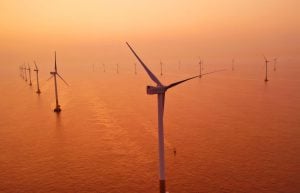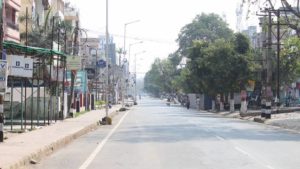China’s economic stimulus measures are receiving close attention, not just because of the impact of its huge economy on the global economy, but also because of its effects on global carbon emissions.
The 2020 Twin Sessions – the most important Chinese political meeting of the year – starts today, and the announcement of a huge economic recovery programme is as good as certain. But how big will it be, and how much will go to carbon-intensive infrastructure? Will it derail China’s ongoing low-carbon transition, or set it on a track to both economic and environmental success?
Local bonds used for ‘traditional’ infrastructure
Despite the epidemic, the central government has repeatedly stressed the importance of annual economic and social targets – the country’s determination to achieve a xiaokang, or moderately well-off, society by 2020 has not wavered. The xiaokang goals include a doubling of 2010 GDP by this year, and intensive poverty reduction.
Editor’s note:
Updated 2020 quotas for central and local government bond issuance were approved by the National People’s Congress on 28 May. Please refer to this China Dialogue article for details.
Against this background, the government has been rolling out financial firepower. One focus has been on boosting the issuance of special bonds by local governments. These are used to overcome shortages of funding for specific projects, stimulating economic growth by leveraging investments and promoting infrastructure construction.
The Ministry of Finance has issued new bond quotas for local governments three times this year. An additional 1.1 trillion yuan (US$155 billion) in quotas were assigned in the first quarter, with a further 1 trillion yuan brought forward to April. By the end of May, local special bonds worth 2.29 trillion yuan are expected to have been issued – approaching the 2.59 trillion total for 2019. Higher levels of local and central government debt quotas may also be approved at the Twin Sessions. Analysis indicates the value of local government special bonds issued this year is set to pass 4 trillion yuan and perhaps double last year’s figures.
This year, even more of the cash raised via special bonds is going to infrastructure – 86.2% of 1.1 trillion yuan in the first three months of the year, much higher than the 25% or so for 2019. Spending on transportation – including toll roads, railways, logistics and car parks – accounted for 32.5% of that infrastructure spend. The remainder went, in order, to other infrastructure projects, industrial parks, and maintaining and beautifying urban and rural environments.
But talk of “neo-infrastructure” has caused speculation that this round of economic stimuli could be different. Neo-infrastructure refers to information and network technology: 5G networks, big data, artificial intelligence, and so on. Analysts have calculated that 2020 will see investment of between 390 billion and 510 billion yuan in such infrastructure. But these figures are still a small part of overall infrastructure spending, and traditional infrastructure remains the go-to option when the economy needs to be stabilised.
How green will it be?
The projects these special bonds are mainly being used to support – railways, public transport, shipping – are listed as suitable for funding via China’s green bond system and do have some emissions reduction potential. Yet historically these local government bonds have not been very eco-friendly. According to an evaluation carried out in 2017, only 9 of 692 bonds examined could be classed as “green”. It is not yet clear how many of those issued this year will qualify.
It is clear that the major infrastructure projects these bonds are facilitating will increase demand for construction materials and equipment and spur cement and steel output, which are all associated with the heavy use of fossil fuels. Major infrastructure projects help develop the economy, and inevitably increase carbon emissions.
It has always been difficult to decide how green China’s investments in transportation infrastructure are. High-speed rail, for example, has great green potential but the components may be made in polluting factories and the finished lines underutilised.
After the 2008 financial crisis, China launched a 4 trillion yuan economic stimulus package – equivalent to 12.5% of 2008 GDP. About 5.25% of that, or 210 billion yuan, was used for energy-saving, emissions cuts and environmental projects, with 9.25% spent on technology and upgrades for energy-intensive industries.
The World Bank has said China’s stimulus package was generally successful. But as investment by local governments was funded mainly by borrowing from banks, local government debts increased significantly. By 2014, China’s total debt had reached $28 trillion, compared to $7 trillion in 2007.
The IMF has pointed out that a surplus of property, and over-capacity in heavy industries such as steel and cement-making, is leading to large numbers of nonperforming loans, reducing financial stability. And a report from the China International Capital Corporation said that the core of the 2008 stimulus was a short-term and rapid boost in infrastructure demand, with virtually no reductions in taxes or other costs, or any policies designed to spur consumer demand.
Ultimately, the 4 trillion yuan package and the 10 industry-specific recovery packages resulted in over-capacity in traditional industries such as steel and cement, forcing China upon a long and difficult programme of capacity reduction.
And the post-2008 recovery was energy and carbon-intensive. Although global carbon emissions dropped 400 million tonnes in 2009, there was a 170 million tonne rebound in 2010, the largest ever increase, mainly driven by Asia’s emerging economies.
Perhaps a recent report from Oxford University best explains how green the various national stimulus plans are. Co-authored by Joseph Stiglitz and Nicholas Stern among others, the report examines economic stabilisation packages put in place by G20 countries since the coronavirus outbreak, and finds that most are focused on providing financial relief: the majority maintain the status quo, being neither beneficial or harmful for the environment. These are “fire-fighting” measures, supporting workers and businesses. Once the epidemic has stabilised, larger and more systematic stimulus packages will appear, which will have longer term implications for the economic structure and determine carbon pathways for some time to come. How funds are directed will determine whether a measure is green or not. In China’s case, the use of funds from local government special bonds suggests a continuation of the traditional approach.









